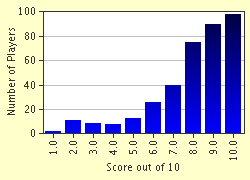Quiz Answer Key and Fun Facts
1. 220 million years ago: It's the late Triassic. You find yourself in Arizona. Of course, it's much more lush than it is now. A tiny dinosaur scampers by your feet, chasing a bug. I know the name of this dinosaur is Coelophysis. But, can you tell me what that name means?
2. Now it's about 75 million years ago. You're in Alberta. You notice that the climate here is warmer and more lush, too. You look around and see a moderately sized dinosaur, about 26 feet long. It reminds you of the better-known triceratops. I know this dinosaur's name as well. It's Chasmosaurus. Can you tell me what this name means?
3. As you continue your jaunt through time and space, you stop off to get a drink. As you wander around looking for a pond, you also wander into an England of about 154 million years ago. You find a lake, but it's too busy with dinosaurs. You decide to continue on your journey and look for water somewhere and some-when else, when you feel the ground shake. At first you panic. Then you see something that reminds you of Brontosaurus. It's about 50 feet long and it's eating leaves. This dinosaur's name is Cetiosauriscus. Can you tell me what that means?
4. Still in search of water, you stop in Mongolia, about 80 million years ago. You sense something looking at you. When you turn to look you see a brownish dinosaur, about 5 feet tall, dart into the leafy brush. This dinosaur's name is Avimimus. What does that mean?
5. You were so intrigued by the Avimimus and the mystery behind it that you forgot all about water. You finally get some water in Australia about 169 million years ago. Looking up from the pond, you see a moderately small dinosaur. It doesn't see you, because it's chasing a small dinosaur with which you are unfamiliar. It reminds you of a raptor, especially the name. Ozraptor. What does this name mean?
6. Feeling refreshed from the water and a little bit frightened by the Ozraptor, you push ahead in your journey. Your next stop is China, about 170 million years ago. Looking around, you see a family of Monolophosaurs, who are looking right at you. You know enough to know these are meat eaters, and they're plenty big. You rush to your next stop, Montana 73 million years ago. Once there, you feel safe enough to remember the Monolophosaurs. What does that name mean?
7. Well, since you're in Montana, you decide to see if you can find a nice, kind species of dinosaur to calm your nerves. You're walking around the base of an active volcano,
which is spewing soot into the air, when you see a family of Maiasaura. You realize that they aren't hunting, and that they eat vegetation, and you feel safe enough to ponder this question then and there: what does the name Maiasaura mean?
8. You felt safe enough with the Maiasaura, but the volcano made you a little nervous, so you continued to Utah, about 116 million years ago. There, in a wide-open plain, you see a dinosaur ambling toward you. It looks like a tank, closely resembling the better-known Ankylosaurus, except that it has no club-like tail. Its name is Sauropelta. You don't feel threatened by this dinosaur. In fact, you feel safer near it, so you walk along behind and off to the side of it as you wonder what its name means. What does Sauropelta mean?
9. After a little while, you get tired of walking and begin to wonder what time it is. You know you should be home soon. You figure you have time for two more stops. You decide to check out England 112 million years ago. There, you see a large dinosaur stalking a herd of dinosaurs you don't recognize. The stalker, however, you know to be called Neovenator. What does this name mean?
10. Finally, as your adventure draws to a close, you find yourself standing in Saskatchewan about 68 million years ago. The ground shakes. You look up into the face of possibly the best known meat eater of all time. It towers over you at about 41 feet. Fortunately for you, it hasn't seen you and is walking right over you. Still, you prefer to get back to your home before thinking about this dinosaur. You know its name is Tyrannosaurus. What does that mean?
Source: Author
andaman
This quiz was reviewed by FunTrivia editor
crisw before going online.
Any errors found in FunTrivia content are routinely corrected through our feedback system.


